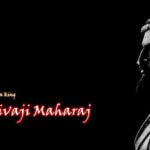The Information Technology (IT) sector is vital to the technology-driven knowledge economy of the twenty-first century. In reality, India has been recognized internationally as a knowledge economy thanks to its remarkable IT sector. The IT sector comprises mostly IT services, IT-enabled services (ITES), e-commerce (online business), Software, and Hardware goods. This sector also plays a significant role in developing the infrastructure required to store, process, and communicate information for vital corporate activities and other organizations.

Evolution of Indian IT Industry
Importance of the Service
The services and products based on information technology are now vital for the growth and success of every firm. This industry has a significant influence on enhancing the productivity of almost every other area of the economy. It has enormous potential for further speeding up economic growth and development. In addition to making the administration and delivery of government services (such as health care, consumer rights, etc.) more efficient, information technology has increased the openness of these processes.
The COVID-19 epidemic has gripped the globe, and economies have been severely impacted. The Indian IT sector continues to exhibit good indicators and the tenacity to overcome this extraordinary catastrophe. It has developed as a worldwide economic power and a significant contributor to Indian and global economies. This article describes how the Indian IT sector has grown through time and its significant contribution to India’s economic prosperity.
Evolution of the Indian IT sector
After independence and until 1970, India lacked a policy or framework governing computer/software technology. During this time, the government made several steps to initiate the design and manufacture of computers in educational institutions. The Bhabha Committee emphasized the significance of electronics and computers to India’s growth in 1963.
On the advice of the Bhabha Committee, the Indian government created the Department of Electronics (DoE) in 1970 to promote the development of electronics and computers in India. In 1972, the government devised a new software plan and permitted the import and export of hardware and software. This plan is regarded as the first turning point in the history of the Indian IT sector when in 1974, Tata Consultancy Services (TCS) received its first global customer from the United States, Burroughs Corporation.
Even though Indian businesses like TCS, WIPRO, and Infosys (1981) exported software products throughout the next decade, commerce was not very promising. In 1978, IBM was compelled to cease operations in India when the government demanded a reduction in its equity.
However, in 1986 the government implemented a liberalization program for the IT sector that de-licensed hardware import and promoted duty-free export. In addition, liberalization in 1991 and the openness of the Indian economy to international investment led to increased competition in the IT sector, which led to standardization and productivity growth. The IT business has expanded swiftly and amassed substantial force exchange. The Information Technology Act of 2000, the National Broadband Policy of 2004, and the Special Economic Zone (SEZ) Act of 2005 boosted the IT sector, resulting in a rise in the number of local and international software/IT firms in the country.
In the last decade, India has become a worldwide IT powerhouse for software firms, and Indian software companies have risen to prominence in the global IT industry. India has become the leading destination for IT sector outsourcing globally. E-commerce, cloud computing, and online shopping all contribute to the rapid expansion of the IT business. In 2019-20, the IT industry was projected to expand by around 10 per cent.
It Sector Drives India’s Economic Development
After the economic reform of 1991-1992, the Indian IT sector expanded exponentially. Indian IT businesses have established thousands of centres in India and about 80 other countries worldwide. In 2019-2020, about 55 per cent of the global service sourcing market (US$ 200-250 billion) would be sourced from the Indian IT sector, which provides IT-ITES to the bulk of global firms. The IT sector’s market size (particularly exports) multiplied from around 67 billion US dollars in 2008-2009 to 191 billion US dollars in 2019-2020, a growth rate of almost tenfold (Graph 1). The income is projected to increase at an increasing pace over the next several years, reaching 350 billion US dollars by 2025.
Along with its increase in terms of market size, India’s IT sector is also progressively contributing a considerable portion to India’s gross domestic product (GDP), contributing to the country’s growth and development. From a negligible 0.4% in 1991-92, the IT sector contributed almost 8% to India’s overall GDP in 2017-18. (Graph 2). By 2025, this proportion is predicted to reach 10 per cent.
Approximately 75% of the world’s digital talent is located in India, as its digital talent pool has expanded over time. India’s four largest IT businesses (TCS, Infosys, Wipro, and HCL Tech) employ more than one million people. New IT-based technologies, like telemedicine, remote monitoring, etc., are increasing in demand in the digital economy. The introduction of fifth-generation (5G) communication technologies, the increasing usage of artificial intelligence, Big Data analytics, cloud computing, and the Internet of Things (IoT) will contribute to the expansion of India’s IT sector. As the scale of India’s digital economy grows, IT firms are expanding their centres in tier II and tier III cities, which will further boost growth and minimize inequities.
Conclusion
In the post-reform years, the IT industry in India has developed at an unusual pace and contributed significantly to the national GDP. Despite the uncertain global economic climate, India’s IT sector has continuously grown and accelerated its development. This industry consumes a significant pool of competent Indian labour, transforming India into a worldwide IT powerhouse.























Leave a Reply